Tao Ye
JDPNet: A Network Based on Joint Degradation Processing for Underwater Image Enhancement
Dec 23, 2025Abstract:Given the complexity of underwater environments and the variability of water as a medium, underwater images are inevitably subject to various types of degradation. The degradations present nonlinear coupling rather than simple superposition, which renders the effective processing of such coupled degradations particularly challenging. Most existing methods focus on designing specific branches, modules, or strategies for specific degradations, with little attention paid to the potential information embedded in their coupling. Consequently, they struggle to effectively capture and process the nonlinear interactions of multiple degradations from a bottom-up perspective. To address this issue, we propose JDPNet, a joint degradation processing network, that mines and unifies the potential information inherent in coupled degradations within a unified framework. Specifically, we introduce a joint feature-mining module, along with a probabilistic bootstrap distribution strategy, to facilitate effective mining and unified adjustment of coupled degradation features. Furthermore, to balance color, clarity, and contrast, we design a novel AquaBalanceLoss to guide the network in learning from multiple coupled degradation losses. Experiments on six publicly available underwater datasets, as well as two new datasets constructed in this study, show that JDPNet exhibits state-of-the-art performance while offering a better tradeoff between performance, parameter size, and computational cost.
AWM-Fuse: Multi-Modality Image Fusion for Adverse Weather via Global and Local Text Perception
Aug 23, 2025



Abstract:Multi-modality image fusion (MMIF) in adverse weather aims to address the loss of visual information caused by weather-related degradations, providing clearer scene representations. Although less studies have attempted to incorporate textual information to improve semantic perception, they often lack effective categorization and thorough analysis of textual content. In response, we propose AWM-Fuse, a novel fusion method for adverse weather conditions, designed to handle multiple degradations through global and local text perception within a unified, shared weight architecture. In particular, a global feature perception module leverages BLIP-produced captions to extract overall scene features and identify primary degradation types, thus promoting generalization across various adverse weather conditions. Complementing this, the local module employs detailed scene descriptions produced by ChatGPT to concentrate on specific degradation effects through concrete textual cues, thereby capturing finer details. Furthermore, textual descriptions are used to constrain the generation of fusion images, effectively steering the network learning process toward better alignment with real semantic labels, thereby promoting the learning of more meaningful visual features. Extensive experiments demonstrate that AWM-Fuse outperforms current state-of-the-art methods in complex weather conditions and downstream tasks. Our code is available at https://github.com/Feecuin/AWM-Fuse.
Enhancing Learned Knowledge in LoRA Adapters Through Efficient Contrastive Decoding on Ascend NPUs
May 20, 2025Abstract:Huawei Cloud users leverage LoRA (Low-Rank Adaptation) as an efficient and scalable method to fine-tune and customize large language models (LLMs) for application-specific needs. However, tasks that require complex reasoning or deep contextual understanding are often hindered by biases or interference from the base model when using typical decoding methods like greedy or beam search. These biases can lead to generic or task-agnostic responses from the base model instead of leveraging the LoRA-specific adaptations. In this paper, we introduce Contrastive LoRA Decoding (CoLD), a novel decoding framework designed to maximize the use of task-specific knowledge in LoRA-adapted models, resulting in better downstream performance. CoLD uses contrastive decoding by scoring candidate tokens based on the divergence between the probability distributions of a LoRA-adapted expert model and the corresponding base model. This approach prioritizes tokens that better align with the LoRA's learned representations, enhancing performance for specialized tasks. While effective, a naive implementation of CoLD is computationally expensive because each decoding step requires evaluating multiple token candidates across both models. To address this, we developed an optimized kernel for Huawei's Ascend NPU. CoLD achieves up to a 5.54% increase in task accuracy while reducing end-to-end latency by 28% compared to greedy decoding. This work provides practical and efficient decoding strategies for fine-tuned LLMs in resource-constrained environments and has broad implications for applied data science in both cloud and on-premises settings.
MMA-UNet: A Multi-Modal Asymmetric UNet Architecture for Infrared and Visible Image Fusion
Apr 27, 2024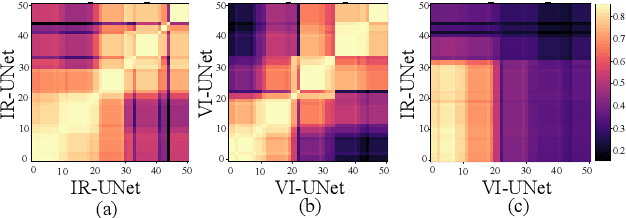

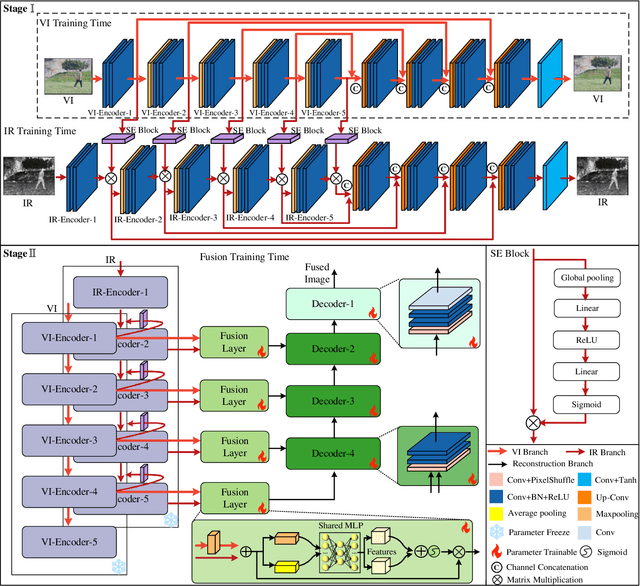

Abstract:Multi-modal image fusion (MMIF) maps useful information from various modalities into the same representation space, thereby producing an informative fused image. However, the existing fusion algorithms tend to symmetrically fuse the multi-modal images, causing the loss of shallow information or bias towards a single modality in certain regions of the fusion results. In this study, we analyzed the spatial distribution differences of information in different modalities and proved that encoding features within the same network is not conducive to achieving simultaneous deep feature space alignment for multi-modal images. To overcome this issue, a Multi-Modal Asymmetric UNet (MMA-UNet) was proposed. We separately trained specialized feature encoders for different modal and implemented a cross-scale fusion strategy to maintain the features from different modalities within the same representation space, ensuring a balanced information fusion process. Furthermore, extensive fusion and downstream task experiments were conducted to demonstrate the efficiency of MMA-UNet in fusing infrared and visible image information, producing visually natural and semantically rich fusion results. Its performance surpasses that of the state-of-the-art comparison fusion methods.
Bridging the Gap between Multi-focus and Multi-modal: A Focused Integration Framework for Multi-modal Image Fusion
Nov 03, 2023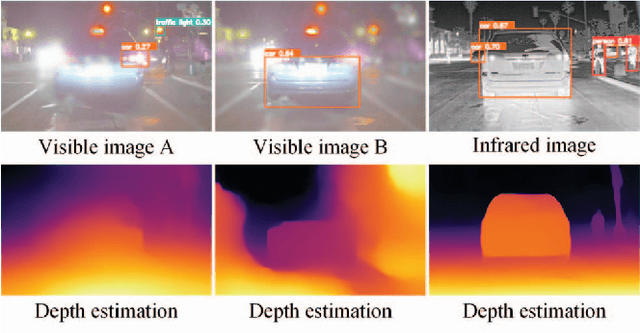
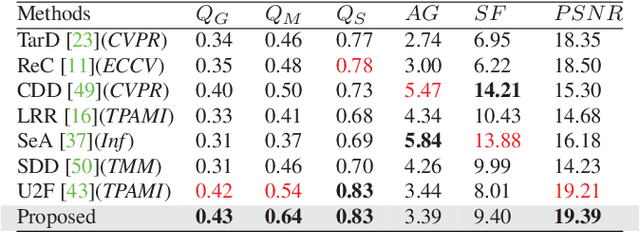
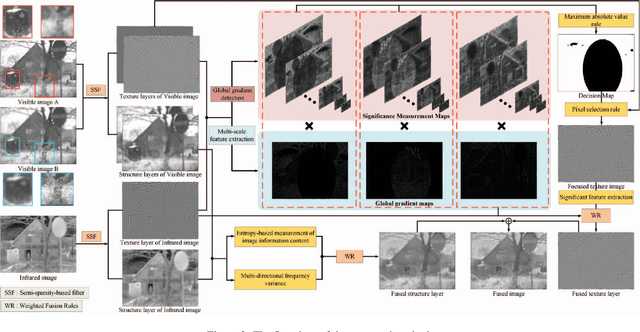
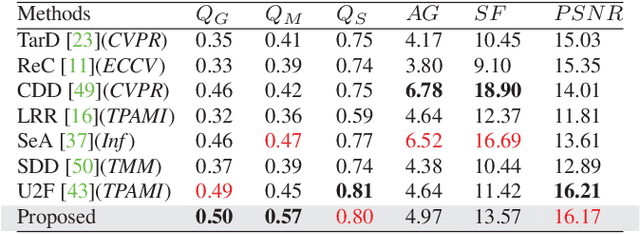
Abstract:Multi-modal image fusion (MMIF) integrates valuable information from different modality images into a fused one. However, the fusion of multiple visible images with different focal regions and infrared images is a unprecedented challenge in real MMIF applications. This is because of the limited depth of the focus of visible optical lenses, which impedes the simultaneous capture of the focal information within the same scene. To address this issue, in this paper, we propose a MMIF framework for joint focused integration and modalities information extraction. Specifically, a semi-sparsity-based smoothing filter is introduced to decompose the images into structure and texture components. Subsequently, a novel multi-scale operator is proposed to fuse the texture components, capable of detecting significant information by considering the pixel focus attributes and relevant data from various modal images. Additionally, to achieve an effective capture of scene luminance and reasonable contrast maintenance, we consider the distribution of energy information in the structural components in terms of multi-directional frequency variance and information entropy. Extensive experiments on existing MMIF datasets, as well as the object detection and depth estimation tasks, consistently demonstrate that the proposed algorithm can surpass the state-of-the-art methods in visual perception and quantitative evaluation. The code is available at https://github.com/ixilai/MFIF-MMIF.
Voice-Face Homogeneity Tells Deepfake
Apr 08, 2022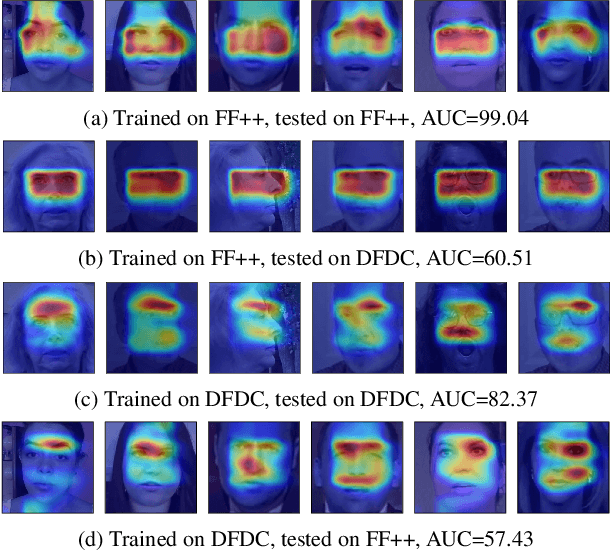
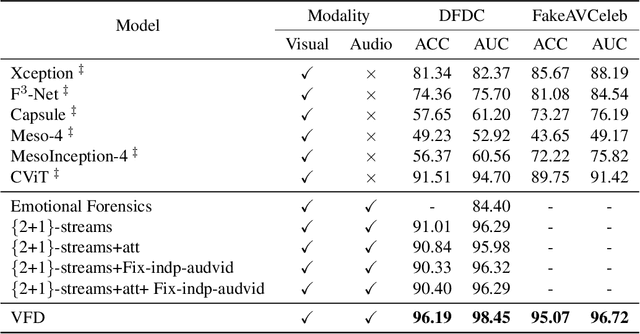
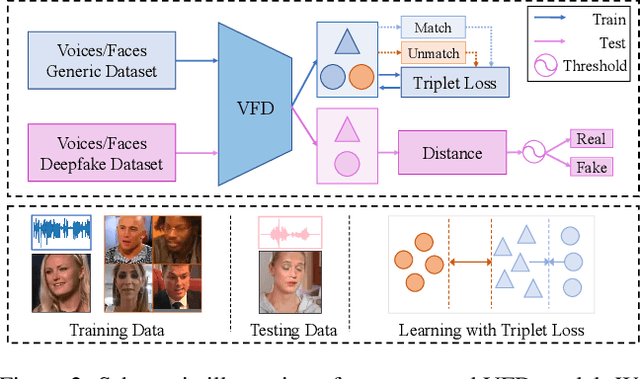
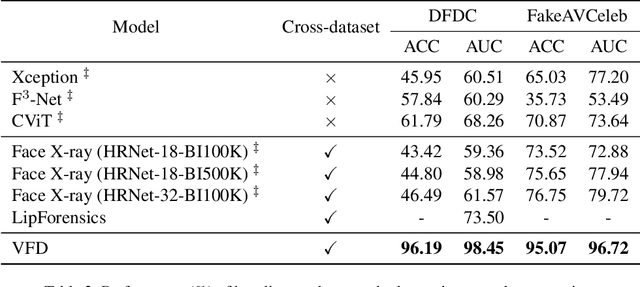
Abstract:Detecting forgery videos is highly desired due to the abuse of deepfake. Existing detection approaches contribute to exploring the specific artifacts in deepfake videos and fit well on certain data. However, the growing technique on these artifacts keeps challenging the robustness of traditional deepfake detectors. As a result, the development of generalizability of these approaches has reached a blockage. To address this issue, given the empirical results that the identities behind voices and faces are often mismatched in deepfake videos, and the voices and faces have homogeneity to some extent, in this paper, we propose to perform the deepfake detection from an unexplored voice-face matching view. To this end, a voice-face matching detection model is devised to measure the matching degree of these two on a generic audio-visual dataset. Thereafter, this model can be smoothly transferred to deepfake datasets without any fine-tuning, and the generalization across datasets is accordingly enhanced. We conduct extensive experiments over two widely exploited datasets - DFDC and FakeAVCeleb. Our model obtains significantly improved performance as compared to other state-of-the-art competitors and maintains favorable generalizability. The code has been released at https://github.com/xaCheng1996/VFD.
A Memetic Algorithm for the Linear Ordering Problem with Cumulative Costs
May 18, 2014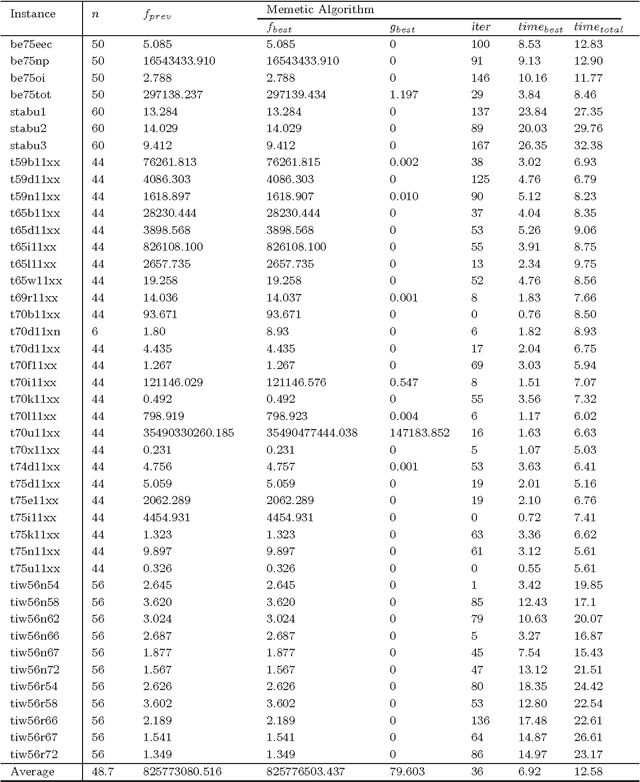
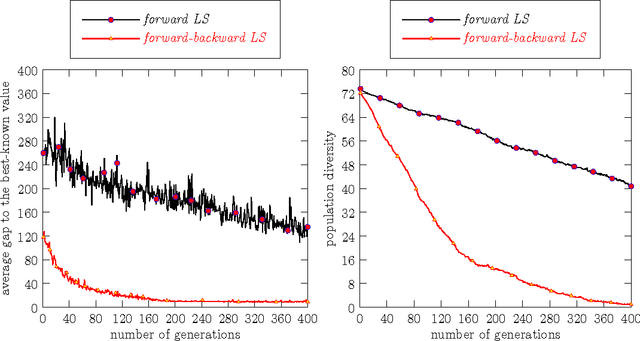
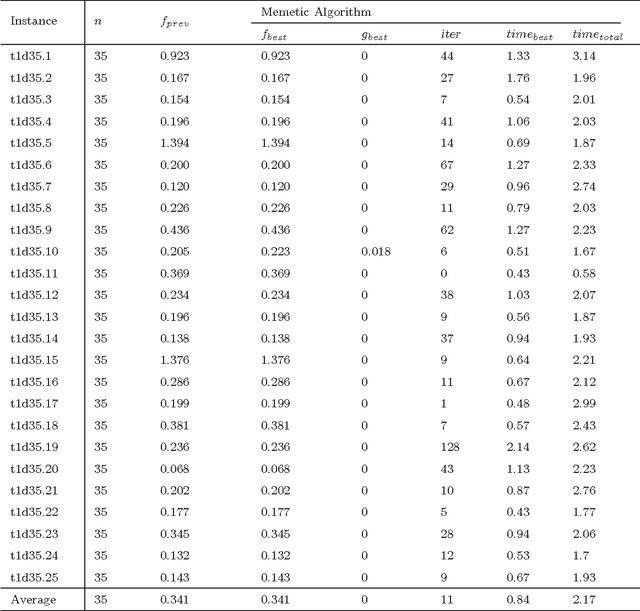
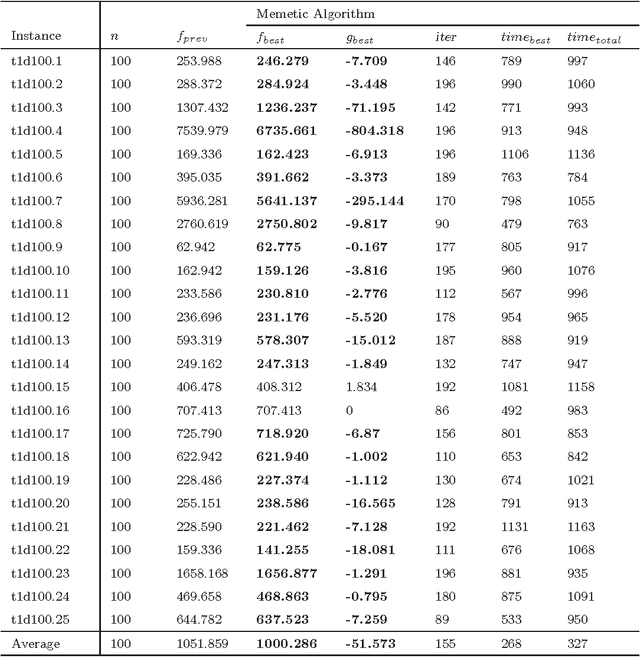
Abstract:This paper introduces an effective memetic algorithm for the linear ordering problem with cumulative costs. The proposed algorithm combines an order-based recombination operator with an improved forward-backward local search procedure and employs a solution quality based replacement criterion for pool updating. Extensive experiments on 118 well-known benchmark instances show that the proposed algorithm achieves competitive results by identifying 46 new upper bounds. Furthermore, some critical ingredients of our algorithm are analyzed to understand the source of its performance.
A Multi-parent Memetic Algorithm for the Linear Ordering Problem
May 18, 2014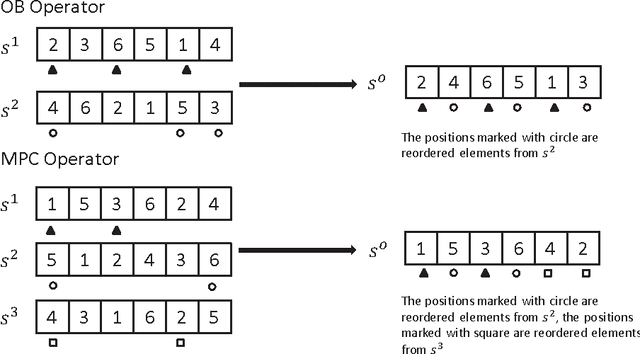
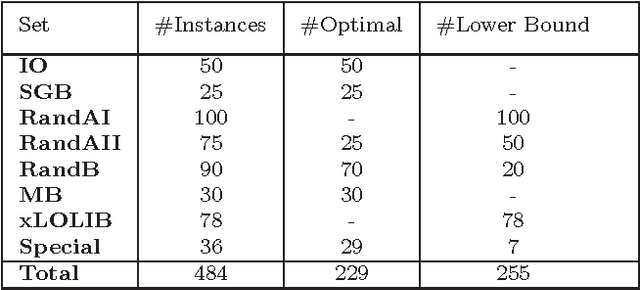

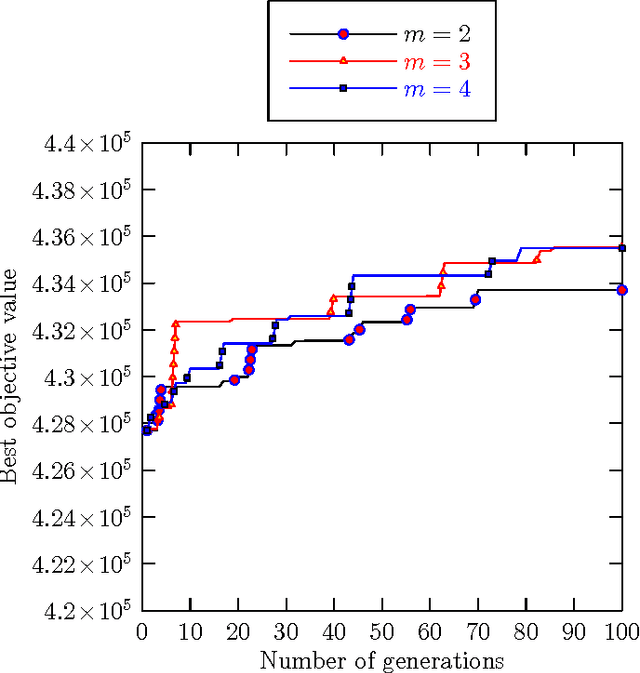
Abstract:In this paper, we present a multi-parent memetic algorithm (denoted by MPM) for solving the classic Linear Ordering Problem (LOP). The MPM algorithm integrates in particular a multi-parent recombination operator for generating offspring solutions and a distance-and-quality based criterion for pool updating. Our MPM algorithm is assessed on 8 sets of 484 widely used LOP instances and compared with several state-of-the-art algorithms in the literature, showing the efficacy of the MPM algorithm. Specifically, for the 255 instances whose optimal solutions are unknown, the MPM is able to detect better solutions than the previous best-known ones for 66 instances, while matching the previous best-known results for 163 instances. Furthermore, some additional experiments are carried out to analyze the key elements and important parameters of MPM.
Iterated Tabu Search Algorithm for Packing Unequal Circles in a Circle
Jun 04, 2013
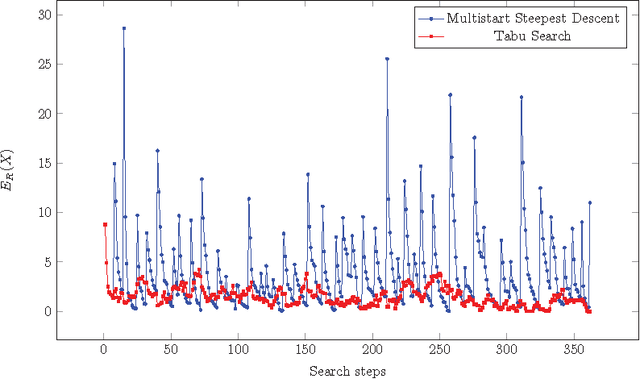
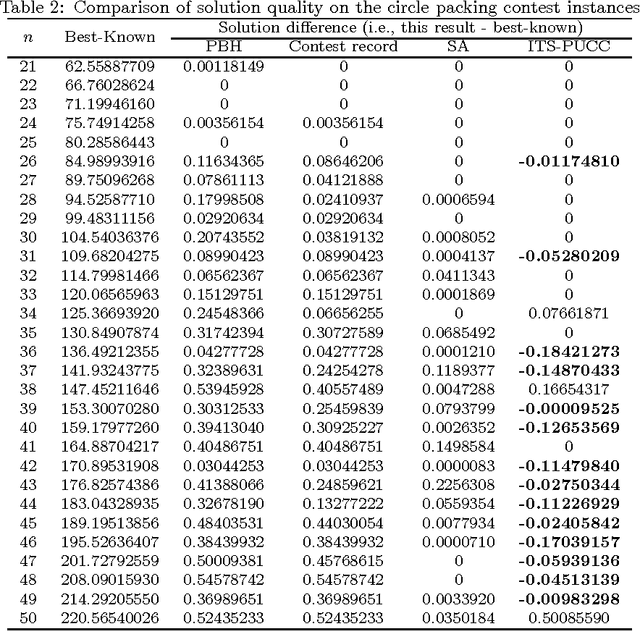
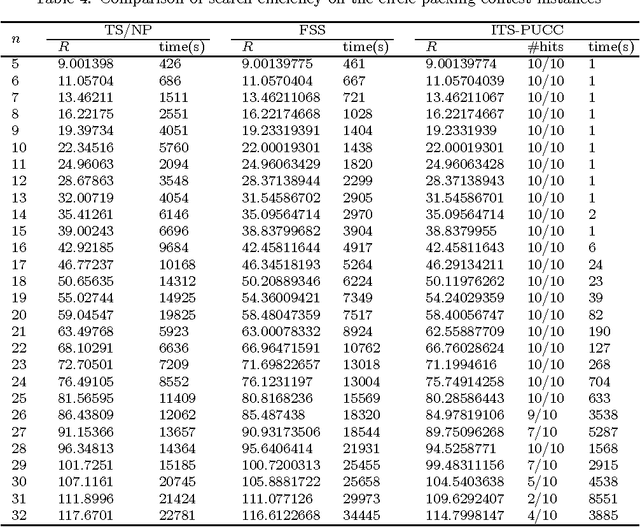
Abstract:This paper presents an Iterated Tabu Search algorithm (denoted by ITS-PUCC) for solving the problem of Packing Unequal Circles in a Circle. The algorithm exploits the continuous and combinatorial nature of the unequal circles packing problem. It uses a continuous local optimization method to generate locally optimal packings. Meanwhile, it builds a neighborhood structure on the set of local minimum via two appropriate perturbation moves and integrates two combinatorial optimization methods, Tabu Search and Iterated Local Search, to systematically search for good local minima. Computational experiments on two sets of widely-used test instances prove its effectiveness and efficiency. For the first set of 46 instances coming from the famous circle packing contest and the second set of 24 instances widely used in the literature, the algorithm is able to discover respectively 14 and 16 better solutions than the previous best-known records.
Integrating tabu search and VLSN search to develop enhanced algorithms: A case study using bipartite boolean quadratic programs
May 24, 2013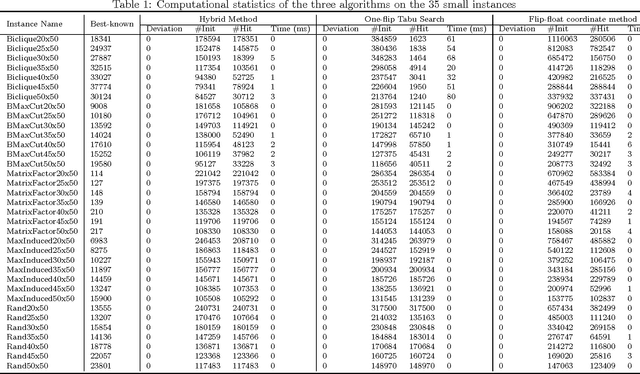
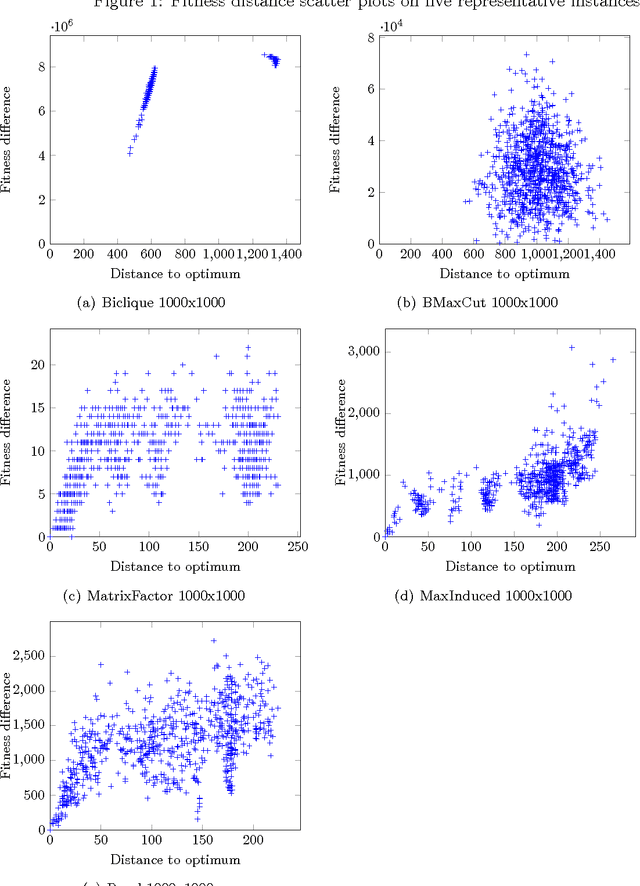
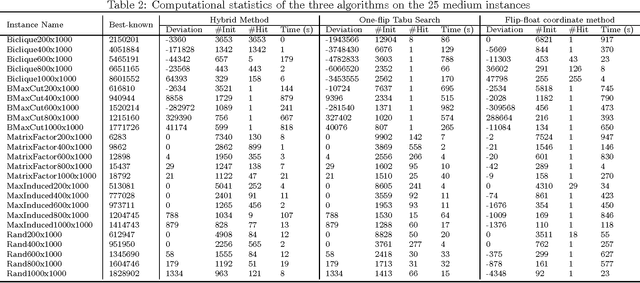
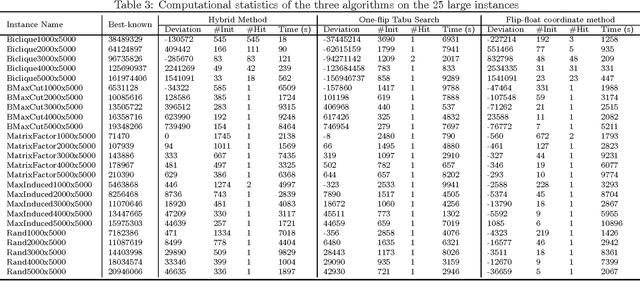
Abstract:The bipartite boolean quadratic programming problem (BBQP) is a generalization of the well studied boolean quadratic programming problem. The model has a variety of real life applications; however, empirical studies of the model are not available in the literature, except in a few isolated instances. In this paper, we develop efficient heuristic algorithms based on tabu search, very large scale neighborhood (VLSN) search, and a hybrid algorithm that integrates the two. The computational study establishes that effective integration of simple tabu search with VLSN search results in superior outcomes, and suggests the value of such an integration in other settings. Complexity analysis and implementation details are provided along with conclusions drawn from experimental analysis. In addition, we obtain solutions better than the best previously known for almost all medium and large size benchmark instances.
 Add to Chrome
Add to Chrome Add to Firefox
Add to Firefox Add to Edge
Add to Edge